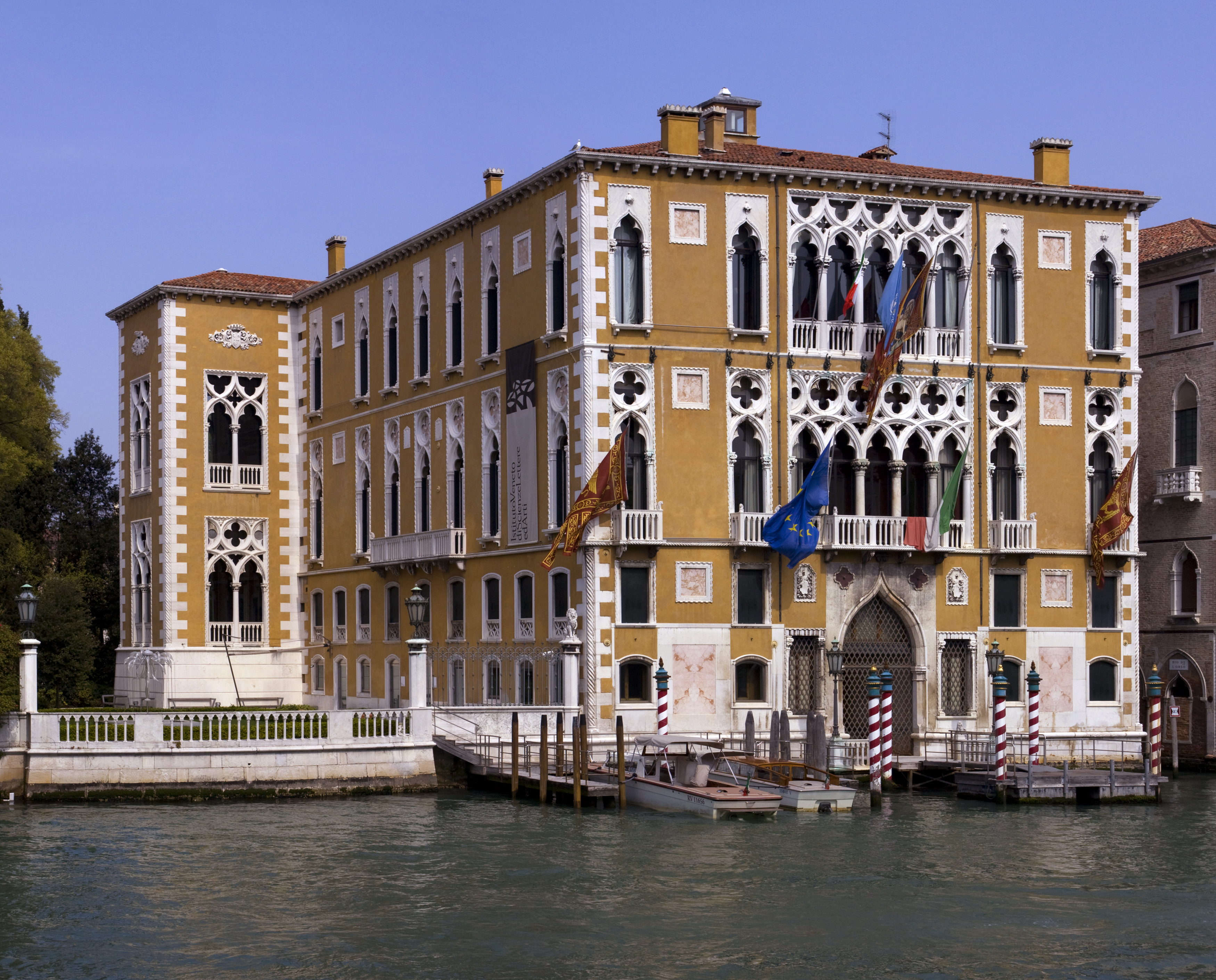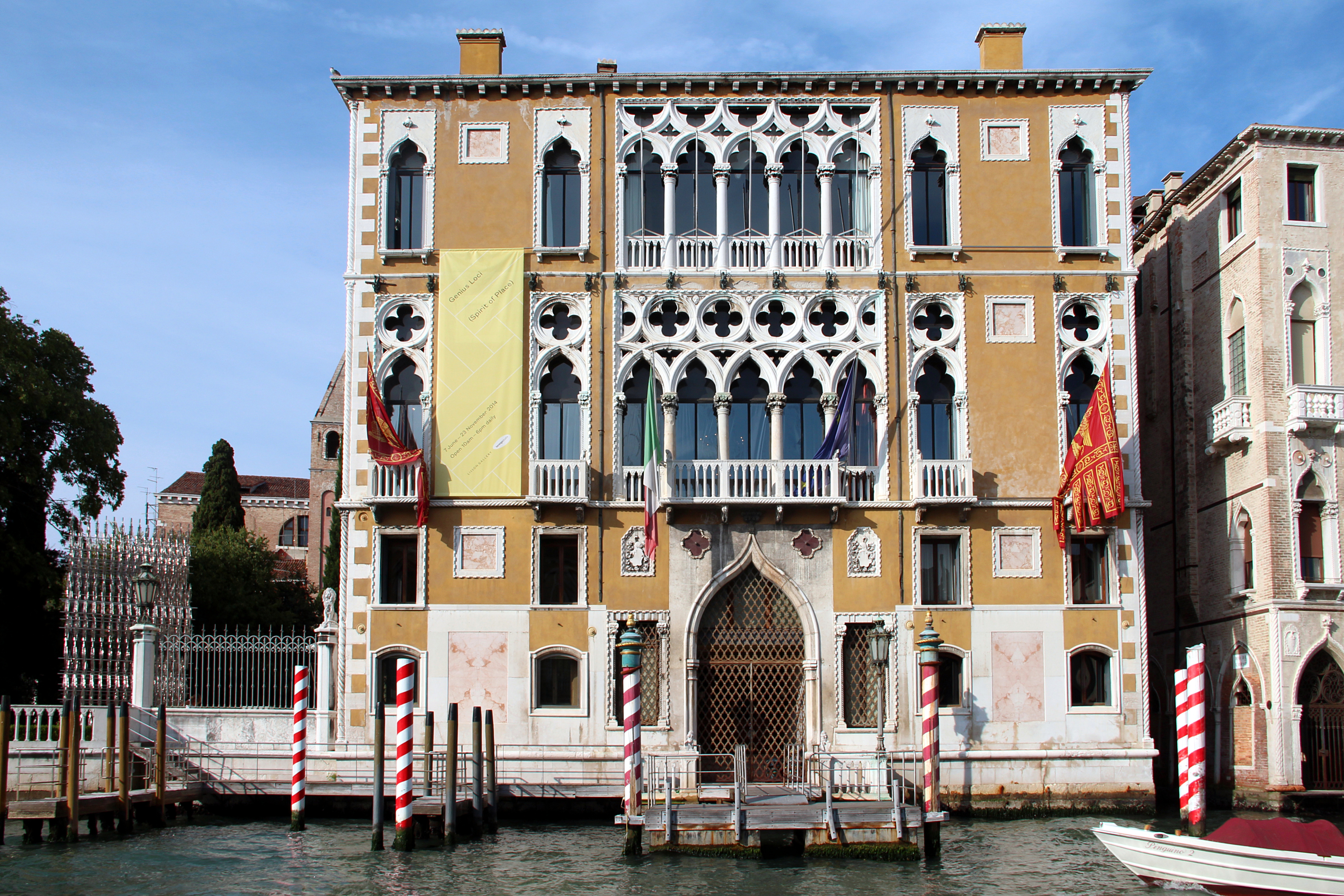Palazzo Cavalli-Franchetti on:
[Wikipedia]
[Google]
[Amazon]

 Palazzo Cavalli-Franchetti is a
Palazzo Cavalli-Franchetti is a
Peerage.com
who had married Sarah Luisa de Rothschild (1834–1924), daughter of Anselm Salomon Rothschild of the Vienna
Istituto Veneto di Scienze, Lettere ed Arti websitePalazzo Cavalli-Franchetti websitePalazzo Cavalli-Franchetti history by Giandomenico Romanelli
{{Coord, 45, 25, 54.1, N, 12, 19, 46.6, E, region:IT_type:landmark, display=title Houses completed in 1565 Cavalli-Franchetti Cavalli-Franchetti Gothic architecture in Venice Venetian Gothic architecture Gothic Revival architecture in Italy 1565 establishments in the Republic of Venice

palace
A palace is a grand residence, especially a royal residence, or the home of a head of state or some other high-ranking dignitary, such as a bishop or archbishop. The word is derived from the Latin name palātium, for Palatine Hill in Rome which ...
in Venice
Venice ( ; it, Venezia ; vec, Venesia or ) is a city in northeastern Italy and the capital of the Veneto Regions of Italy, region. It is built on a group of 118 small islands that are separated by canals and linked by over 400 ...
, Italy, not far from the Ponte dell'Accademia
The Ponte dell'Accademia is one of only four bridges to span the Grand Canal in Venice, Italy. It crosses near the southern end of the canal, and is named for the Accademia di Belle Arti di Venezia, which from 1807 to 2004 was housed in the ...
and next to the Palazzo Barbaro
The Palazzi Barbaro—also known as Palazzo Barbaro, Ca' Barbaro, and Palazzo Barbaro-Curtis—are a pair of adjoining palaces, in the San Marco district of Venice, northern Italy. They were formerly one of the homes of the patrician Barbaro fami ...
on the Grand Canal of Venice
The Grand Canal ( it, Canal Grande ; vec, Canal Grando, anciently ''Canałasso'' ) is a channel in Venice, Italy. It forms one of the major water-traffic corridors in the city.
One end of the canal leads into the lagoon near the Santa Lucia ...
. Since 1999 it has been the seat of the Istituto Veneto di Scienze, Lettere ed Arti
The Istituto Veneto di Scienze, Lettere ed Arti (IVSLA) is an academy of sciences in Venice.
History
The Istituto Veneto was created as the Reale Istituto Nazionale, created by Napoleon for the Kingdom of Italy in 1810.
The current name was gi ...
and frequently houses cultural events.
History
The palace was erected in 1565. In the 19th century it was internally modernised and externally enriched inVenetian Gothic
Venetian Gothic is the particular form of Italian Gothic architecture typical of Venice, originating in local building requirements, with some influence from Byzantine architecture, and some from Islamic architecture, reflecting Venice's trading ...
style, with rich window framing, by a series of grand owners. The first neo-Gothic improvements were made after 1840, when the young Archduke Frederick Ferdinand of Austria (1821–1847) reassembled the property, the Palazzo Cavalli-Gussoni, which had become divided among heirs, and embarked on a complex project intended to give a more prominent Habsburg
The House of Habsburg (), alternatively spelled Hapsburg in Englishgerman: Haus Habsburg, ; es, Casa de Habsburgo; hu, Habsburg család, it, Casa di Asburgo, nl, Huis van Habsburg, pl, dom Habsburgów, pt, Casa de Habsburgo, la, Domus Hab ...
presence along the Grand Canal, as Austria-Hungary
Austria-Hungary, often referred to as the Austro-Hungarian Empire,, the Dual Monarchy, or Austria, was a constitutional monarchy and great power in Central Europe between 1867 and 1918. It was formed with the Austro-Hungarian Compromise of ...
had been awarded the territories of Venice after the Napoleonic Wars
The Napoleonic Wars (1803–1815) were a series of major global conflicts pitting the French Empire and its allies, led by Napoleon I, against a fluctuating array of European states formed into various coalitions. It produced a period of Fren ...
. At his premature death, unmarried, in 1847 the palazzo was bought by Henri, comte de Chambord
Henri, Count of Chambord and Duke of Bordeaux (french: Henri Charles Ferdinand Marie Dieudonné d'Artois, duc de Bordeaux, comte de Chambord; 29 September 1820 – 24 August 1883) was disputedly King of France from 2 to 9 August 1830 as Hen ...
, styled "Henri V" by Bourbon legitimists, who entrusted further restorations to Giambattista Meduna; his portrait on the balcony, with Santa Maria Della Salute in the background, is in the Ducal Palace of Modena
The Ducal Palace of Modena is a Baroque palace in Modena, Italy. It was the residence of the Este Dukes of Modena between 1452 and 1859. It currently houses a portion of the Italian Military Academy.
History
The palace occupies the site of t ...
.
In 1878, Baron Raimondo Franchetti (1829–1905),who had married Sarah Luisa de Rothschild (1834–1924), daughter of Anselm Salomon Rothschild of the Vienna
Rothschild
Rothschild () is a name derived from the German ''zum rothen Schild'' (with the old spelling "th"), meaning "with the red sign", in reference to the houses where these family members lived or had lived. At the time, houses were designated by sign ...
s, bought the palazzo and commissioned further works by architect Camillo Boito
Camillo Boito (; 30 October 1836 – 28 June 1914) was an Italian architect and engineer, and a noted art critic, art historian and novelist.
Biography
Boito was born in Rome, the son of an Italian painter of miniatures. His mother was of Poli ...
, who constructed the grand staircase. In September 1922, it was sold to the Istituto Federale di Credito per il Risorgimento delle Venezie by Franchetti's widow.
See also
*Palazzo Cavalli
Palazzo Cavalli or Palazzo Corner Martinengo is a palace in Venice, located in the San Marco district and overlooking the Grand Canal. It locates not far from the Ponte di Rialto, between Palazzo Corner Valmarana and Ca' Farsetti, in front of ...
Notes
External links
Istituto Veneto di Scienze, Lettere ed Arti website
{{Coord, 45, 25, 54.1, N, 12, 19, 46.6, E, region:IT_type:landmark, display=title Houses completed in 1565 Cavalli-Franchetti Cavalli-Franchetti Gothic architecture in Venice Venetian Gothic architecture Gothic Revival architecture in Italy 1565 establishments in the Republic of Venice